This was published 5 years ago
Inside the crisis that changed Australian government
As a pandemic threatened the world, a conversation in Kirribilli between a Liberal PM and Labor Premier was emblematic of the political co-operation to come.
By Rob Harris
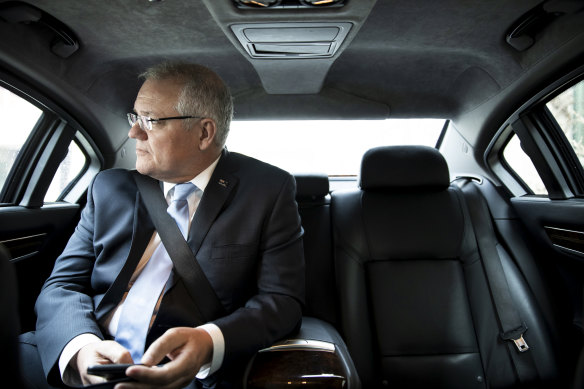
The decision to create the national cabinet will partly define Scott Morrison's legacy.Credit: Dominic Lorrimer
The sun set over Sydney Harbour on a clear March evening just after 7pm. The smoke that choked the city just weeks earlier was by then a distant memory but on that evening there was another catastrophe on a global scale on the horizon.
At Kirribilli, the Prime Minister had opened up his official home, an 1850s twin-gabled Gothic mansion, to state and territory leaders for traditional drinks held the night before a Council of Australian Governments meeting. None of the participants knew that when they assembled the next day - Friday the 13th - in Parramatta, a 30-odd minute trip west depending on traffic, it would be the last ever COAG gathering.
As the premiers, chief ministers and hangers-on left for the evening, they noticed Daniel Andrews, the Victorian Premier, lingering behind.
Andrews, whose successive victories in Victoria and strong working relationship with Morrison has cemented him as the country's most prominent Labor leader, joined his host for a Lark Tasmanian whisky on the back porch, staring east across one of the nation's most exclusive views.
As they sipped their single malt they discussed what the coronavirus pandemic sweeping across the world would do to Australia. A $17 billion stimulus package - giving one-off $750 payments to 6.5 million welfare recipients and a wage subsidy for 120,000 apprentices or trainees - had been announced a day earlier. It was a good response, Andrews told his host, but more would be needed. He predicted a health and economic crisis like the nation had rarely seen was on the doorstep.
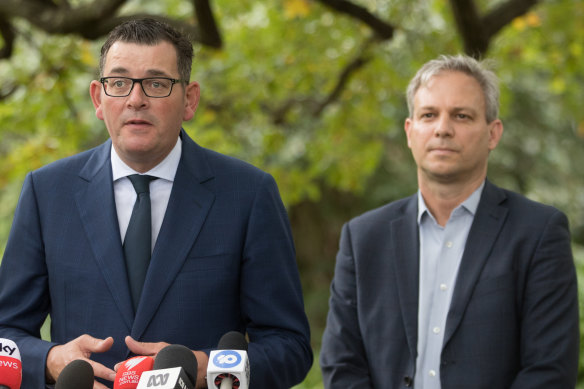
Victorian Premier Daniel Andrews, flanked by Victoria's Chief Health Officer Dr Brett Sutton, predicted a health and economic crisis like the nation had rarely seen.Credit: Simon Schluter
The conversation, between a Liberal Prime Minister and a Labor Premier who both play their politics as hard as it gets, was emblematic of the co-operation that would be required over the coming months.
Andrews, a former health minister, was worried his hospitals risked being overloaded with cases when the virus took off. Morrison agreed the outlook was grim, but said there was a plan and it was important not to spook the public.
They both agreed they would have to ask Australians to do things that they have never asked them to do before.
In an eight-week period from February to March some of the most momentous political decisions of a generation would be made.
The pace of the unfolding crisis meant many were reduced to historical footnotes as every day brought a bigger development to trump the last.
Morrison would call it a dual crisis - on the health and economic front - with the two working against each other to make it "one of the most complex issues Australia has ever faced".
"There are no good choices," he would warn.
Some of the biggest decisions will shape the future for the next generations of Australians. It remains to be seen just how.
It began in late January when Brendan Murphy, the nation's chief medical officer, returned to work after his Christmas break. Murphy is a 65-year-old mild-mannered kidney specialist who studied at Melbourne Grammar and spent 11 years running the Austin Hospital in Heidelberg. Within weeks he would become one of the most recognisable — and influential — people in the country.
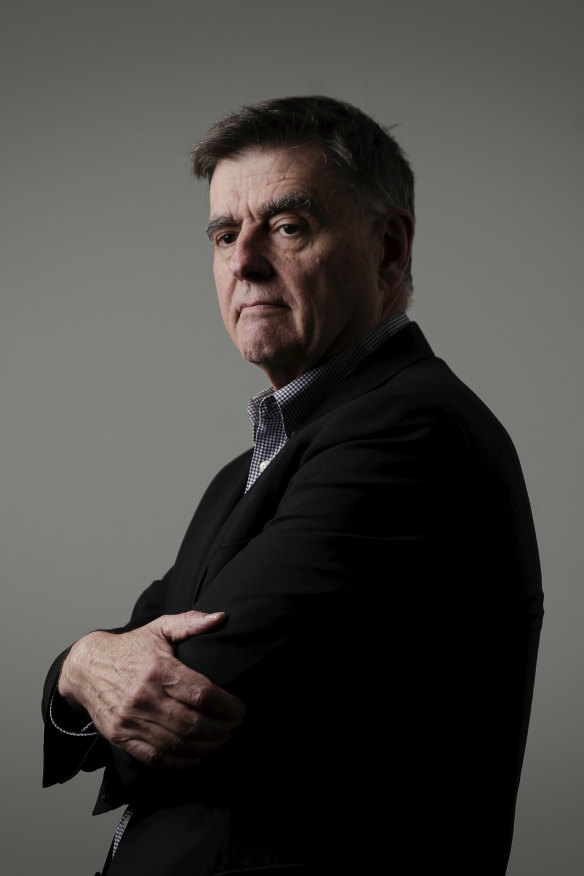
Professor Brendan Murphy.Credit: Alex Ellinghausen
Murphy's colleagues on the Australian Health Protection Principal Committee - made up of state and territory chief health officers - had received a matter-of-fact notification from the World Health Organisation on New Year's Day. There was a "cluster" of pneumonia cases in the central Chinese city of Wuhan.
When Murphy arrived back at work in the second week of the new year, early signs were there had been no new cases and it was a zoonotic disease – one that is transmitted from animals to humans. This suggested it was a case of being alert, not alarmed.
That all changed on January 20 when Australian authorities received clear evidence there was significant human-to-human transmission. For the no-nonsense Murphy, this was a "game changer".
He called Health Minister Greg Hunt, informing him there were concerns the virus could spread through China and the rest of the world. Murphy would, based on the best medical advice, be listing the virus as one of human pandemic potential under the Biosecurity Act.
Over the following days a national incident room was established at the Department of Health's Woden headquarters in suburban Canberra and preparations were made to bolster the National Medical Stockpile of drugs, vaccines and personal protective equipment.
Murphy would relocate from his home in Melbourne's inner north to his Canberra flat full time. His wife Sally Walker - the first female vice-chancellor of Deakin University - would join him. Very soon they would be only seeing their two-year-old granddaughter, Anna, on FaceTime.
On January 25 his worst fears were realised. A Victorian man in his 50s, a Chinese national who had returned to Melbourne six days earlier after two weeks in Wuhan, became Australia's first confirmed case of COVID-19.
The man had visited his GP feeling unwell a few days earlier but was sent home. He later admitted himself to the Monash Medical Centre in Clayton with what he thought was pneumonia. After a series of tests he would become Australia's patient zero. Within 24 hours NSW also had three cases - all returned travellers from China.
On the first day of February, on a sunny Saturday morning in Balnarring on Victoria's Mornington Peninsula, Hunt was at his son's cricket match when Murphy called.
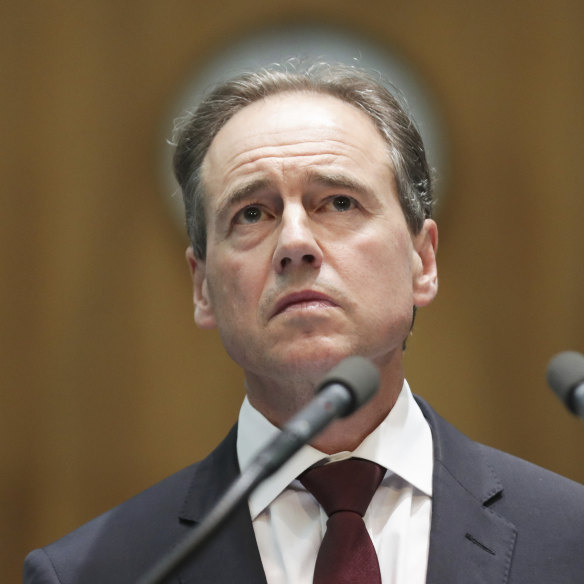
Health Minister Greg Hunt said closing the border to China was one of the biggest one-day decisions a government had made in 50 years.Credit: Alex Ellinghausen
"I think it's time," Murphy told him. "We have evidence of human-to-human transmission outside of Hubei [near Wuhan]. I think we are going to have to close the border to China."
The National Security Committee of Cabinet - a high-powered group including Treasurer Josh Frydenberg - met at 2pm. Closing the border to Australia's most important economic partner at a time of some strain in the Sino-Australian relationship was no small matter. But talk soon turned to how quickly it could be done.
By 5pm, an hour after the meeting had finished, Morrison would announce the border closure would commence that night at 9pm. Hunt, a workaholic who expects nothing less of those around him, would later call that act one of the biggest one-day decisions a government had made in 50 years. There would be plenty more to come.
While just a handful of cases would emerge over the next four weeks, the virus had begun to cast a long shadow. COVID-19, the pandemic previously known as the "2019 novel coronavirus", represented the biggest health threat since the Spanish flu 100 years ago and an economic crisis not seen since the Great Depression.
With Hubei province in lockdown there were increased concerns about the health and welfare of stranded Australians who had not yet returned home. Lockdown in central China began on January 23 when authorities issued a notice informing residents all public transport, including buses, railways, flights, and ferry services would be suspended. The residents of Wuhan were also not allowed to leave the city without permission. Footage would later emerge of apartment doors being welded shut and baton-wielding police dragging people into ambulances.
Qantas steps in
Michael McCormack, the Deputy Prime Minister and Transport Minister, was in almost-daily conversations with the major airlines. Following discussions at a senior level about how to get these people home he called Qantas chief executive Alan Joyce.
McCormack explained Australian children and elderly people in the virus-hit city would get priority evacuation and then likely be taken to Christmas Island for quarantine. He asked whether Qantas was prepared to take on the mission and what it would need.
Joyce said the national carrier had never flown to Wuhan and would be starting from scratch. It had had no flight plans, fuel contract, ground handling team or accreditation. Planning for new ports usually takes a month. This time they had days.
On Wednesday, January 29, the National Security Committee of Cabinet met early and decided to launch the repatriation operation, after a briefing from Chinese authorities in Beijing.
Realising the virus was still unknown and anxieties were high, the airline asked its 30,000 strong workforce for volunteers. Within hours they were oversubscribed. Staff wanted to be part of it - pilots, engineers and flight attendants. A final 12 were selected for a flight unlike any other. An AUSMAT team of highly-trained and specialist medics would accompany them.
Under its wings, 680 passengers would be returned home - 244 passengers, including 89 children, were on the first flight from Wuhan to RAAF Learmonth, near the town of Exmouth on the north-west coast of Western Australia. In the weeks that followed, Qantas made two more rescue flights.
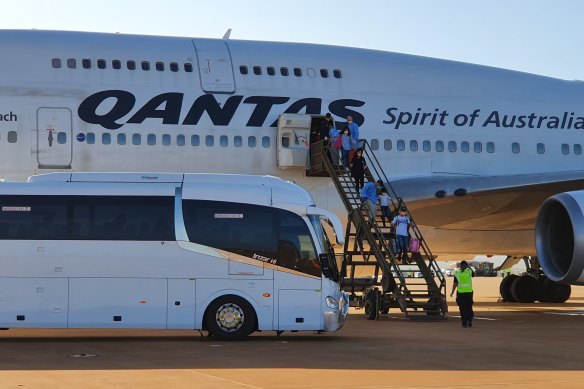
Australians arrive at RAAF Base Learmonth in WA on a Qantas flight from China on February 4.Credit: Australian Defence Force
The next one — from Wuhan to Darwin — carried 266 passengers, including 136 children, but was unexpectedly delayed in Hong Kong, where officials and staff had to remain on the aircraft for 24 hours awaiting permission to land in China. They commandeered business class and broke out the cheese boxes.
On the way home, Border Force staff ran an impromptu crèche for the children on board.
The third flight — from Tokyo to Darwin — carried 170 passengers, all of whom had been on board the Diamond Princess cruise ship. One of the ship's passengers had tested positive on February 1 - six days after disembarking. But the ship had already become a breeding ground for the virus.
More than 700 of the 3700 Diamond Princess passengers and crew — most of them foreign nationals — would eventually be infected.
Qantas staff who volunteered were paid cash bonuses and awarded the Spirit of Australia award for their efforts. Some of them made more than one trip.
Almost six weeks after the first flight Morrison went to Qantas HQ in Mascot to personally thank those who ran the mission. He told staff that a "national carrier" was not a term which could be bought, leased, patented or "tendered out".
"It's not even a legal responsibility. It's a moral one. It's that willingness to stand in the breach, and say we have a responsibility to Australia and we will fulfil it," he said. Airlines around the world would come to a grinding halt in a matter of weeks. Morrison and his cabinet would soon be deciding the fate of Qantas' main rival, Virgin Australia.
In the second week of February global coronavirus cases had exceeded 43,000 with a death toll of more than 1000. Australia had just 13 cases with no deaths.
By the end of the month, 35 days after the first recorded case, Morrison declared the outbreak would become a pandemic and activated the government's emergency-response plan. It would take the WHO until March 11 to come to the same conclusion.
February 28 was the last day Australians would wake to the news no new coronavirus infections had been confirmed. It remains so.
On March 1, 78-year-old James Kwan from Perth became Australia's first COVID-19 death. He and his wife were among 180 Australians who had been stranded in Yokohama on the Diamond Princess.
Wednesday, March 4 was the first day where there were more than 10 new cases. Six days later there were 20 new cases in one day.
That week, with 26 confirmed cases in NSW, Premier Gladys Berejiklian told Sydneysiders to "stay calm" and "please put things into perspective".
She said the health system was on "high alert" and had "various plans in place for the various scenarios that can emerge in the next weeks and months".
"I have full confidence that our health system is doing everything we can to address the spread of this virus and we ask everybody to stay calm and take the precautionary steps that have been recommended," she said.
"You might be a carrier who has a very mild case and unintentionally pass it on to others who might be vulnerable."
On March 10 Andrews, standing inside the Royal Melbourne Hospital, warned "extreme measures" were coming. Schools could be closed, workforces sent home, sporting events cancelled.
Two days later Oscar winner Tom Hanks, filming an Elvis biopic for Australian director Baz Luhrmann on the Gold Coast, tested positive to COVID-19 along with his actor wife Rita Wilson. He would later joke he had to get used to learning his temperature in degrees Celsius, where 36 was good but 38 was bad, "like how Hollywood treats female actresses."
COAG takes a different turn
The nine leaders woke on Friday, March 13 to news more than 4700 deaths worldwide from COVID-19 had been recorded. Grave reports were coming out of Italy, with more than 1000 now dead and the nation's hospitals overwhelmed.
Global financial markets were also in freefall, Wall Street recording its worst trading day since Black Monday in 1987. The White House had announced a travel ban on Europe and when the Australian markets opened the ASX plunged 7 per cent.
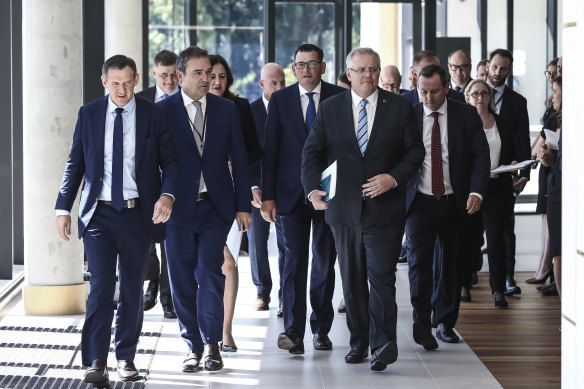
Michael Gunner (NT), Steven Marshall (SA) , Annastacia Palaszczuk, (Queensland), Daniel Andrews (Victoria), Scott Morrison and Mark McGowan (WA) walk out of the COAG meeting in Parramatta.Credit: Dominic Lorrimer
Inside BankWest Stadium, the year-old 30,000-seat sports ground in Western Sydney chosen to host the COAG meeting, news came through that Flight Centre had closed 100 stores.
Berejiklian attempted to play down new modelling suggesting one in five NSW people would catch COVID-19 in a "best-case scenario".
She conceded there were growing doubts about Sydney's Royal Easter Show, which had continued since 1869, interrupted only in 1919 during the Spanish flu outbreak and during World War II.
"Without causing any unnecessary alarm I will say we do need to consider those issues."
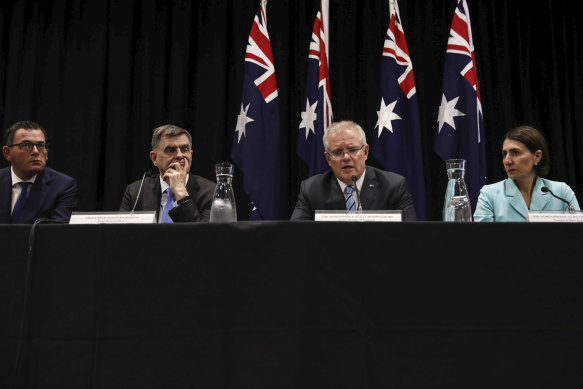
Victorian Premier Daniel Andrews, national Chief Medical Officer Brendan Murphy, Prime Minister Scott Morrison and NSW Premier Gladys Berejiklian at a COAG press conference.Credit: Dominic Lorrimer
Estimates from the federal government's own health advisers was that "up to 150,000 Australians could die" under a worst-case scenario, a figure splashed across the front of The Age and The Sydney Morning Herald.
Alarm was already rife in sections of the media, with ABC resident medical expert Norman Swan predicting 70-80,000 infections within weeks.
"No magic fairy will bring that down. 14-20 days behind Italy. Believe in maths not magic," he would tweet.
Back in Melbourne plans for one of the city's biggest annual sporting events, the Formula 1 grand prix, were in disarray. Overnight a member of the McLaren racing team had tested positive for the coronavirus. The team had subsequently withdrawn.
Teams and race directors and officials met late into the night to discuss options on whether to race. It went to a vote and ended in a 5-5 tie.
By 8.30am, with speculation the race was off, then on again, organisers insisted the Friday schedule was going ahead as normal, but only three teams wanted to race. Big teams such as McLaren, Ferrari, Mercedes and Renault were nowhere to be seen. Star drivers Sebastian Vettel and Kimi Raikkonen had already early boarded flights home.
In farcical scenes at 9.30am Andrews appeared in front of the press pack at Parramatta and said if the race went ahead it would not be open to spectators. But 30 minutes later F1 and FIA confirmed in a joint statement the 2020 Australian Grand Prix was cancelled - just two hours before the scheduled start of first practice.
Inside the stadium in Parramatta, top of the agenda at COAG was supposed to be the summer's bushfires but there were more urgent briefings to be had from the Reserve Bank of Australia governor Philip Lowe and from Treasury Secretary Steven Kennedy. Things were moving quickly.
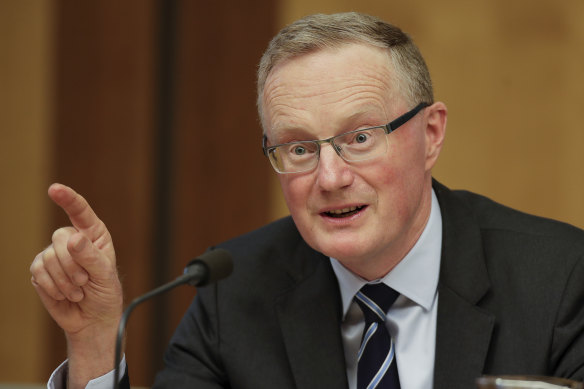
Reserve Bank governor Philip Lowe.Credit: Alex Ellinghausen
Within a week Lowe would be calling an emergency out-of-cycle board meeting and announced its second cut to the cash rate in a fortnight, this time to a record low of 0.25 per cent. Kennedy, having already worked through an initial stimulus package, was already helping to plan another.
Murphy would also update the meeting on the latest medical advice to hand. It was a waiting game. The best plans were in place for a wide-scale outbreak but there was no need for panic just yet.
Morning tea was called and Murphy returned to teleconference with his state and territory colleagues on the Australian Health Protection Principal Committee, which had been meeting daily since the end of January.
[Morrison] had been saying he was going to the footy all week and this latest advice was such a departure from what the room had been told early and it knocked the room for six.
COAG attendee
Victoria had confirmed its first case of community transmission - a term that would soon enter the lexicon to describe the situation where a person is infected by the virus but they have not been overseas recently or been in recent contact with other confirmed cases.
The state's Chief Health Officer, Brett Sutton, told his peers in the meeting the nation needed to begin shutting down. Sutton's view was supported by Queensland colleague Jeannette Young, the longest-serving CHO in the nation, who called for more urgent action to force social distancing. NSW Chief Medical Officer Dr Kerry Chant argued everyone returning from overseas should avoid public events and family gatherings for 14 days.
Murphy chaired the daily meetings of the nation's leading public health officials, researchers and medical experts in an attempt to take a consensus view to the nation's leaders. He agreed it was time for more drastic action.
He scurried back to the COAG leaders in the early afternoon.
"Morrison looked furious," said one source in the room. "He'd been saying he was going to the footy all week and this latest advice was such a departure from what the room had been told early and it knocked the room for six."
Murphy admits the group was "taken aback" but has stressed leaders "took it in their stride". He says the enduring feature of the pandemic has been the degree to which political leaders asked for "frank and fearless advice" and then acted on it.
Officials and aides were asked to leave and for the next few hours Morrison and his counterparts forged a new way forward.
Lunch was waiting but would not happen. Together, Morrison, Berejiklian, Liberal premiers Steven Marshall (South Australia) and Peter Gutwein (Tasmania), and Labor premiers Andrews, Annastacia Palaszczuk (Queensland), Mark McGowan (Western Australia), and chief ministers Andrew Barr (ACT) and Mick Gunner (Northern Territory) would design the new national cabinet.
It was an idea which had been, according to one source close to Morrison, "bouncing around in the back of his head prior". But there were no written proposals or guidance from constitutional lawyers. It all materialised in that moment. Morrison said they should meet regularly. The decision to create the national cabinet - which will partly define Morrison's legacy - was made in a matter of hours. The leaders held the equivalent of a decade's worth of COAG meetings since.

Professor Brendan Murphy, Scott Morrison and Secretary of the Department of Prime Minister and Cabinet, Phil Gaetjens, during a National Cabinet meeting.Credit: Alex Ellinghausen
Morrison's view was always that to beat the virus, state and federal governments would have to work together like never before. He announced the group would meet weekly to handle the crisis, akin to a war-time cabinet but the only time in Australian history it had included state and territory leaders. It would sideline the opposition and elevate many state premiers to national figures.
"We are going to be working very closely together to ensure there's a consistency of response, that there's a coordination of response," Morrison would announce at the press conference, flanked by his new cabinet colleagues. "And we simply say to the Australian people that we will manage this carefully in your interests."
There would also be a ban on mass gatherings of more than 500 people from Monday.
The group agreed that Morrison, who had said all week he couldn't wait to watch his beloved Cronulla Sharks in the opening round of the NRL against South Sydney at ANZ Stadium, should still go. The restrictions would begin on Monday and people should not panic.
"Governments will take decisions, sports bodies, other organisations, will take sensible decisions. But right now, there is not that great risk. There is not that immediate threat," he told the joint press conference.
Within hours that would change, when the virus struck at the heart of the government.
The coronavirus reaches cabinet
Dr John Kunkel, the Prime Minister's chief of staff, answered his mobile phone not long after 4pm when the delegation had returned to Kirribilli following a dramatic day in Parramatta.
It was Craig Maclachlan, the chief of staff to Home Affairs Minister Peter Dutton. The boss, Maclachlan said, had woken up with a temperature and sore throat and, because he'd flown back from the United States just a few days earlier, he'd been tested for COVID-19.
The result was positive.
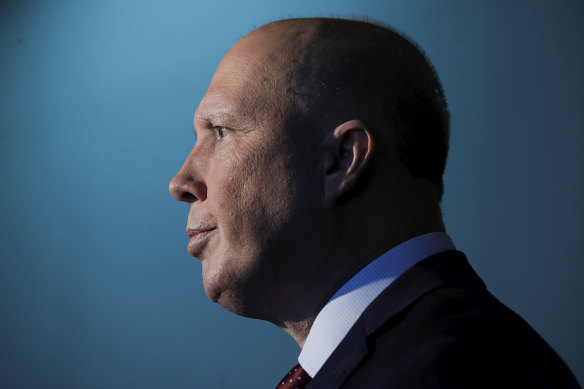
Home Affairs Minister Peter Dutton's positive diagnosis rocked Australia's leaders.Credit: Alex Ellinghausen
Dutton was by then in the Royal Brisbane and Women's Hospital, in line with Queensland Health protocols. He was working with the state's contact tracing team to provide details of everyone he'd been near for the past few days. It would include every member of cabinet at Tuesday's meeting.
The infection would have ramifications in Washington DC too, where US President Donald Trump's daughter, Ivanka, would later work from home "out of an abundance of caution" after meeting Dutton the previous week. US Attorney-General William Barr would also go into precautionary isolation after crossing paths with Dutton at a meeting of representatives from the Five Eyes intelligence alliance.
The message was relayed to the PM and some of his senior aides. They describe hearing the news as "surreal". But then their minds began to tick over: If he has it... and he sat next to them in the cabinet, and they later sat with this person, who sat next to another… Paranoia set in. It was a genuine moment of fear that no one was safe and the entire group could have been exposed.
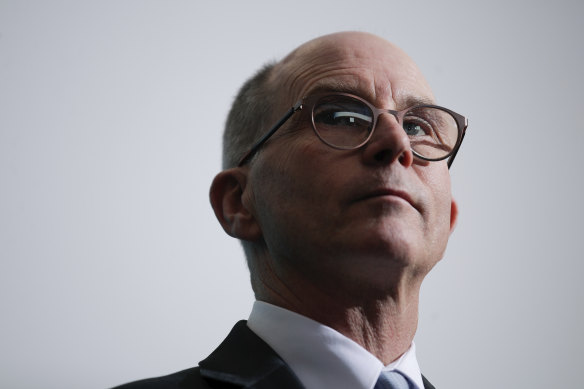
Deputy Chief Medical Officer Professor Paul Kelly reassured leaders after Dutton's diagnosis.Credit: Alex Ellinghausen
Urgent advice was sought from Professor Paul Kelly, the deputy chief medical officer, an epidemiologist with more than 30 years' research experience. Kelly calmed them down and on an emergency phone hook-up when he walked a select group of senior cabinet ministers through the scenario. He reiterated that only people who had close contact with Dutton in the preceding 24 hours before he became symptomatic would need to self-isolate.
Kelly's view was that it did not include the Prime Minister or any other members of the cabinet. As such, neither the PM - nor any of those in the meeting - should be tested for COVID-19 when they were trying to send a consistent message that only those displaying symptoms should have access to tests.
After a messy and unpredictable day Morrison and his inner circle scrambled to convince Australians they were still in control.
Would he need to revisit his plan to go to the football? Morrison sent a message to the new WhatsApp group containing the state and territory leaders. Dutton had COVID-19 but the medical advice was they were all ok.
At 5.50pm an emailed media release would alert the Canberra press gallery to Dutton's positive test. It stressed he felt fine.
Soon after a statement from Morrison's office would circulate. He would not be watching his Sharks the next day.
This is part one of a special series on how Australia tackled the coronavirus. Part two tomorrow will examine how a health crisis became an economic one, leading to Australia's first recession in three decades.